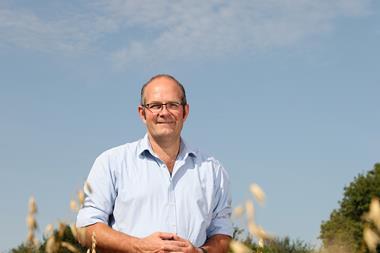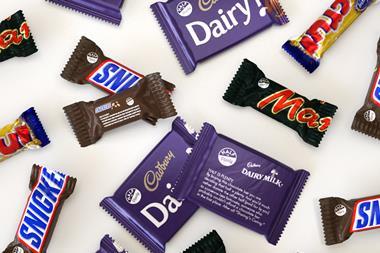So you think you've got a wonder product, but it can take a fresh view to make you realise it's true potential and its drawbacks.One obvious way to obtain this different perspective is to ask the consumer. Qualitative research is commonplace few new products end up on shelf without being put through their paces by consumers. Discussion groups are a big part of that research usually run informally, with interaction and free thought encouraged by the moderator, and taken deadly seriously by the manufacturer who can watch behind a one-way mirror.
The groups usually comprise eight people, all carefully screened in case, for example, one might be allergic to the product.
A number of groups can test a product and mostly it's rare for the concept, the finished pack and advertising to be shown together, but we're taking a short cut.
The group for Caffeine Hitz was made up of five women and three men and the meeting began with introductions and pleasantries. Initially, moderator Amanda Anderton was careful not to talk about confectionery in case she influenced the group's view of what the product was and which category it should go in. She first wanted to know what products they normally used and what their needs were concepts usually referred to as "usage and attitude".
Anderton was after spontaneous thoughts and feelings as that's how most purchasing decisions are made. The moderator is always keen to emphasise that the group can change aspects of the product in a bid to open up the debate. She adds: "Sometimes they can try not to hurt your feelings and you need to reassure them that you want them to be honest and that we're not with the company."
The group was divided in two and told to come up with an ideal energy product and to talk about what it would mean to them. Most became quite animated at this point and one group came up with a Yakult-type drink which could be consumed in one shot, and the other proposed a more healthy product which was a cross between a lozenge and a Ferrero Rocher.
They were given a concept statement before the product was shown to them. In this case Anderton said: "This is an all-natural, premium quality confection that offers a smooth chocolate taste blended with real coffee flavour. Delivering an instant pick-me up energy boost, for busy people on the go."
The purpose is to see how far the product lives up to the group's expectations when they see it. Anderton says: "Concept statements are important but we always stress that the words won't become an advertisement. Also, that the group shouldn't get too hung up on the words but rather think about what the whole idea communicates."
The group was none too complimentary about the Caffeine Hitz concept. The main reaction was that chocolate and coffee were neither natural nor healthy and the same view was true of confectionery. The words premium quality' smacked of expensive', and the strongest impact was made by the word chocolate, not energy.
Comments included: "It doesn't make me think, wow, I want to buy it" and "It's trying to do too much."
Opinions changed a little once they saw the product; they initially thought it was a drink and immediate comments included: "They look nice and tempting" and "I would definitely buy that, I've changed my mind," and "I would never buy that, I bet it tastes gross!"
The name was thought to be "steely", "unnatural" and "aggressive" but after discussion, trainer-wearing, professional women, aged 25-35 were considered the target.
The ad campaign wasn't accepted wholeheartedly either it was thought by one to have drug connotations, while another was unsure about what the campaign was trying to say. Another added: "The adverts look as if they'd appeal more to men, but the product isn't so masculine."
It was a very mixed response; some liked the product but not the packaging while others thought the ad campaign was good but wouldn't buy the product. Anderton was careful not to sway opinions and to ask open questions to ensure the findings were unbiased.
After the group left, she summed up the meeting a strategic presentation is always done for clients to help answer their objectives."The phrase pick me up' has negative associations for most consumers," Anderton says. "It is a direct hook into the world of artificiality, stimulants and also to the world of illegal drugs. There are a lot of negative associations surrounding such a proposition." She believes energy boost' is a much more motivating expression because it taps into fewer notions of artificiality and allows for a more natural way of raising energy levels.
So it seems the Caffeine Hitz concept confuses the consumer. Overall, it's understood as a confectionery product and some people have negative associations with coffee-flavoured chocolate products, or they don't like them.
Our concept statement failed to do the job too most members of the group were unsure what the product was. Anderton says: "This would suggest that considerable development (especially in terms of the end benefits and need fulfilment) would be needed."
Certainly, when the product was finally shown to the group there was a stronger sense of understanding in terms of what it was all about.
The energy boost' message was largely ignored in favour of the chocolate-coffee' message. She says: "There was a certain sense that within the chocolate-coffee communication there was an implicit notion of energy boost (chocolate providing a sugar boost and coffee providing a mental alertness). Interestingly, this appeared to mean there was no unique story behind the energy boost of this product. In fact, this end benefit seemed somewhat weak and a stronger reason to believe was required to provide consumers with a real hook."
There appeared to be a clear and accepted perception of a young, professional woman who'd buy the product and, based on the description through the pack visuals, it was easy to create times and places when she'd use the product, including: on her desk during the day; sharing with friends and served as an after-dinner mint substitute. Men weren't considered target consumers because the product was thought to be too small for them and they wouldn't want to carry a cup in the street.
Adds Anderton: "There would seem to be a mismatch between the idea and the packaging design. Although there was strong visual impact and some appeal among women for the coffee cup format, there were strong issues with the colours, fonts and finish used on the cup."
The group found it too flashy, "clubby", youth smart and ironically, male oriented. There was a view that Caffeine Hitz would better suit packaging that was more sophisticated, feminine and upmarket in appearance (more Muji than Nike). "While the larger size of the cup makes it appear something for stationary consumption or sharing, the colours and design make the product appear something more suited to on-the-go, hard-hitting, short-lived consumption. Conumers found it difficult to imagine someone seeking a sharp hit or energy to want it in a cup that size."
The group did appreciate the colour variation and the different names across the range, although they found it difficult to imagine the relevance of the different taste experiences.
The name Hitz was largely rejected by the group because although it conjured up imagery supporting the energy boost story, it failed to resonate with the product perceptions. "It was quite difficult to evaluate the advertising campaign due to the mismatch of stories within the concept, product and pack ideas. However, it would seem that as a creative idea the Hit Squad held strong appeal. It was perceived as unique, relevant, contemporary and amusing. However, as this advertising campaign heavily focuses on the energy boost story Hit Squad taps in more strongly to the pack design elements rather than the product idea."
Anderton adds: "We'd strongly recommend that the concept is developed further and that the target consumer is more clearly defined. There is a creative positioning that will hold appeal with one target and a product idea that will hold its own with another."
The strategic analysis can also look at whether the composition of a group could affect findings. In our case, the fact that men were involved probably skewed the results because their relationship with chocolate is different to women's. However, Research International Qualitatif emphasises it wouldn't have had a mixed gender group under normal circumstances.
It's also clear that in an ideal world there should have been some prior screening and separate research into the elements such as pack and flavours before we'd taken the finished product into the group.
It looks as if we have an interesting idea, with cool packaging and a likeable ad campaign but the different aspects appeal to three separate groups of consumers.
Will the supermarket buyer agree? Find out next week...
{{FEATURES }}
Close menu
- Home
- Retail & Wholesale
-
Products & Suppliers
- Back to parent navigation item
- Products & Suppliers
-
Product Categories:
- Back to parent navigation item
- Product Categories:
- Alcoholic drinks
- Bakery
- Cereals & breakfast
- Cheese
- Chicken & poultry
- Chocolate
- Confectionery
- Crisps, nuts & snacks
- Dairy
- Fish
- Fresh produce
- Frozen
- Household
- Meat
- Own Label
- Sauces & condiments
- Seasonal
- Soft drinks
- Vaping
- Vegan & plant-based
- World foods
- Suppliers
- People
- Reports & Data
-
Topics A-Z
- Back to parent navigation item
- Topics A-Z
-
Popular topics:
- Back to parent navigation item
- Popular topics:
- Cost of living crisis
- Crime
- Deposit Return Schemes
- Finance
- Government & Regulation
- Health
- Inflation
- Loyalty
- Marketing
- Mergers & Acquisitions
- New Product Development
- Sourcing
- Supply chain
- Sustainability & environment
- Technology
- Ultra Processed Foods
- Vaping
- A-Z all topics
- Content by type:
- Events
- Ask iA (beta)
- Subscribe now
Sign in to comment on this article
Not logged in before? Register for FREE guest access today.
You will be able to:
- Read more stories
- Receive daily newsletters
- Comment on stories
Advert















No comments yet